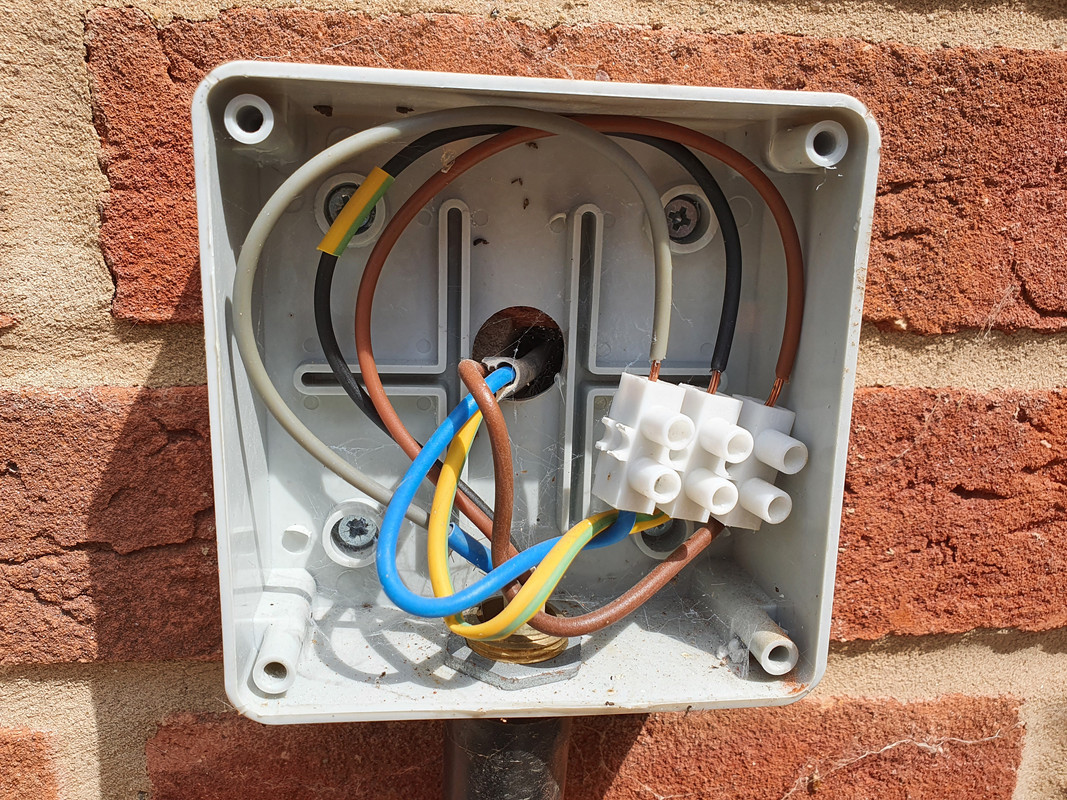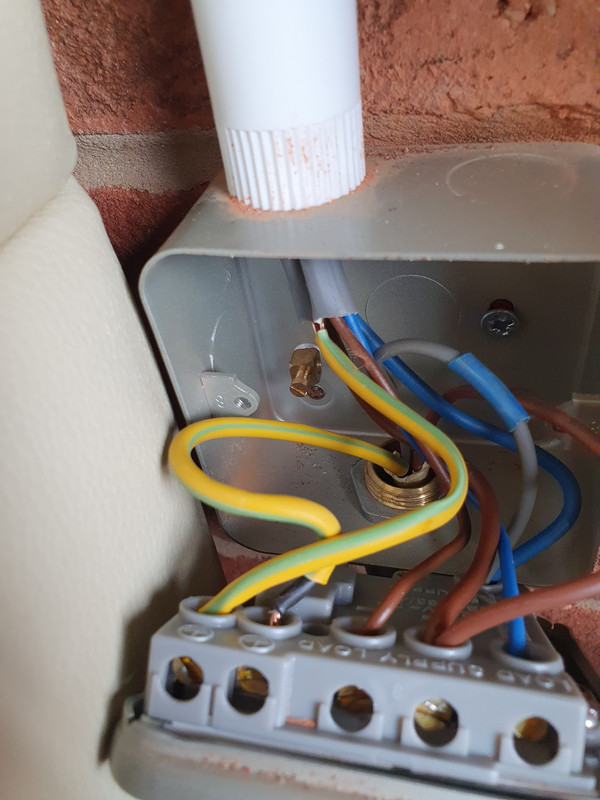Hi,
I am currently studying/training to start a career as an electrician and i have recently finished my C&G Level 2 and currently studying for my Level 3.
In the meantime i want to do a few minor works to my house to keep my practice my practical knowledge/keep things in my head.
My MFT and other bits arrived today, so the first little job is that i want to replace a junction box outside with an outdoor double socket. The set up is:
-New build only 2 years old so everything should be new/up to code (one can hope!)
-A fused connection unit takes a spur in the kitchen of from the downstairs ring final (this ring feeds all downstairs sockets and the central heating), feeds the power to a standalone garage (which has a double socket and a light (on a fused switch)).
-Where the cable comes out of the wall on the back of the house from the fused spur it goes into a junction box attached to the wall, to link to SWA which then runs down the wall and underground, then back up to the standalone garage.
Essentially, i just want to turn this connection on the wall of the house into a double socket.
I want to do it all properly and imagine i am doing it for a customer and issue myself a minor works certificate so i wanted to know how one would go about testing this sort of small job in the real world.
Would you do all applicable tests (continuity, IR, ZS and RCD)? If so, would you do them on the whole circuit or would you do them from the fused spur , with the fuse removed (assuming it would have to be double pole to do this without touching anything in the DB?).
So far my studies haven't really covered specifically what you would do on just a small modification on a spur such as this. I am guessing that to be absolutely sure, it may be better to do the tests involving the whole circuit (though with the IR test i will have to be mindful of anything that might get damaged at 500v so will have to remove thermostats/turn off the isolation switched to the boiler and kitchen applicances etc).
Any advice would be much appreciated as it would be good to know how in the real world an electrician would go about doing the tests on something like this, as i dont want to unnecessarily risk fiddling with more stuff than i really have to.
Many thanks
I am currently studying/training to start a career as an electrician and i have recently finished my C&G Level 2 and currently studying for my Level 3.
In the meantime i want to do a few minor works to my house to keep my practice my practical knowledge/keep things in my head.
My MFT and other bits arrived today, so the first little job is that i want to replace a junction box outside with an outdoor double socket. The set up is:
-New build only 2 years old so everything should be new/up to code (one can hope!)
-A fused connection unit takes a spur in the kitchen of from the downstairs ring final (this ring feeds all downstairs sockets and the central heating), feeds the power to a standalone garage (which has a double socket and a light (on a fused switch)).
-Where the cable comes out of the wall on the back of the house from the fused spur it goes into a junction box attached to the wall, to link to SWA which then runs down the wall and underground, then back up to the standalone garage.
Essentially, i just want to turn this connection on the wall of the house into a double socket.
I want to do it all properly and imagine i am doing it for a customer and issue myself a minor works certificate so i wanted to know how one would go about testing this sort of small job in the real world.
Would you do all applicable tests (continuity, IR, ZS and RCD)? If so, would you do them on the whole circuit or would you do them from the fused spur , with the fuse removed (assuming it would have to be double pole to do this without touching anything in the DB?).
So far my studies haven't really covered specifically what you would do on just a small modification on a spur such as this. I am guessing that to be absolutely sure, it may be better to do the tests involving the whole circuit (though with the IR test i will have to be mindful of anything that might get damaged at 500v so will have to remove thermostats/turn off the isolation switched to the boiler and kitchen applicances etc).
Any advice would be much appreciated as it would be good to know how in the real world an electrician would go about doing the tests on something like this, as i dont want to unnecessarily risk fiddling with more stuff than i really have to.
Many thanks










